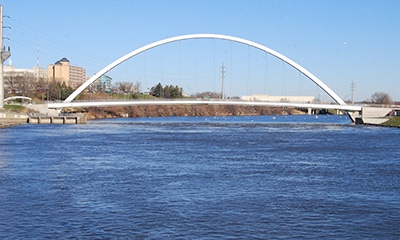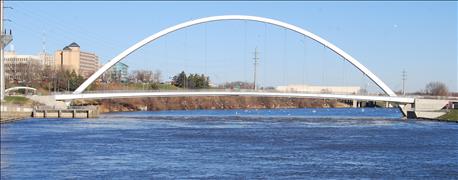
Last week Iowa Gov. Terry Branstad and Lt. Gov. Kim Reynolds announced the results of an economic study of their proposal to improve Iowa’s water quality over the next three decades. The analysis was conducted by economists at Iowa State University’s Center for Agricultural and Rural Development (CARD). The CARD study says the governor’s proposed plan to invest $4.7 billion of state funding for soil conservation and water quality improvement cost-sharing practices with farmers and landowners would generate nearly $700 million in economic activity and more than 3,900 jobs.

ECONOMIC BOOST: A water quality funding plan proposed by Gov. Terry Branstad and introduced for consideration by the Iowa Legislature would generate nearly $700 million in economic activity and more than 3,900 jobs over three decades, says a study by Iowa State University economists.
Branstad is calling on the Iowa Legislature to extend a tax that supports Iowa school facilities and divert part of the tax revenue growth to efforts to reduce the amount of nitrogen and phosphorus entering Iowa’s rivers, lakes and streams. The proposal “would mean more jobs for Iowa families, as well as provide dedicated funding for efforts that would result in cleaner water,” the governor says.
Many benefits can result from improving water quality in Iowa
There are many benefits to improving water quality, including employment and economic development growth, according to the CARD analysis. The study examined the economic impact of the governor’s SAVE for the Future Proposal currently making its way through the state legislature. The economic study was conducted by ISU economists Dermot Hayes, Cathy Kling and John Lawrence in February 2016. The study was financed by ISU as part of ongoing research efforts.
The Iowa Nutrient Reduction Strategy (INRS), a science and technology-based framework to reduce nutrients in Iowa waters, calls for a long-term source of dedicated funding. In conjunction with federal funding and private investments from landowners and third party organizations, the SAVE for the Future Proposal will generate and dedicate approximately $4.7 billion to implement the INRS, says Branstad. If fully funded, the Iowa Nutrient Reduction Strategy will require labor and other expenses to plant millions of acres of cover crops and build thousands of wetlands and bioreactors.
More jobs for Iowans and dedicated funding for cleaner water
The ISU study examined the economic costs and benefits and concludes that on an annualized basis, projected spending under this proposal would generate approximately $690 million in economic activity, along with 1,150 full-time direct employment job positions and 2,800 total full-time positions.
“This study shows the overall economic impact that long-term dedicated, and growing water quality funding can have on Iowa’s economy,” says Branstad. “I’m pleased the Iowa House has taken action and passed this bill in committee, and I look forward to working with the Iowa Senate and the Iowa House for full approval.”
Lt. Gov. Kim Reynolds adds, “The hundreds of millions of dollars generated by this level of economic activity is unmatched by any proposal currently being considered at the Iowa Statehouse. The extent of this commitment will not only go a long way to reduce nutrient levels in our waterways, but would also create thousands of job opportunities and increased incomes for Iowa families.” The full study can be read here.
Additional revenues generated would go to water quality efforts
Earlier this year Branstad introduced his water quality plan at a press conference at the Iowa Statehouse. Standing with him and speaking about the need for increased water quality funding were state education officials, agriculture groups and current U.S. Secretary of Agriculture and former Iowa Gov. Tom Vilsack. Branstad and Reynolds explained their proposal to extend the Secure and Advanced Vision for Education (SAVE) fund for 20 years until the year 2049.
The existing 1-cent statewide sales tax that is currently used to fund school infrastructure projects is set to expire in 2029. It continues to generate increasing levels of revenue each year. Branstad’s proposal would put a cap on how much of that revenue goes to schools and then would divert the remainder of the revenue increases to water quality improvement projects.
An estimate by the Iowa Department of Revenue projects Branstad’s plan would commit $4.7 billion to water quality initiatives over 32 years while maintaining almost $21 billion for schools. “Extending this fund would generate and dedicate long-term funding for both education infrastructure and water quality efforts throughout the state,” says Branstad. “It is estimated that schools in Iowa would receive an additional $20.7 billion while $4.7 billion would be dedicated to water quality efforts over the 30 years.”
About the Author(s)
You May Also Like




